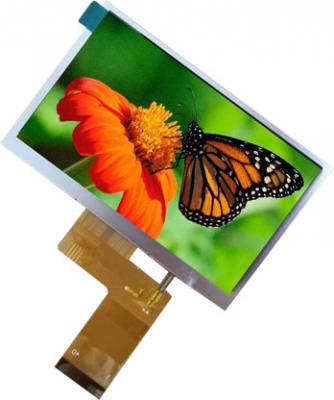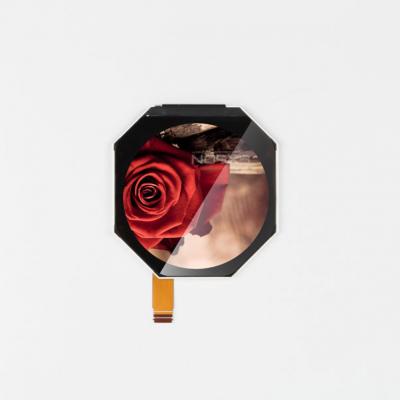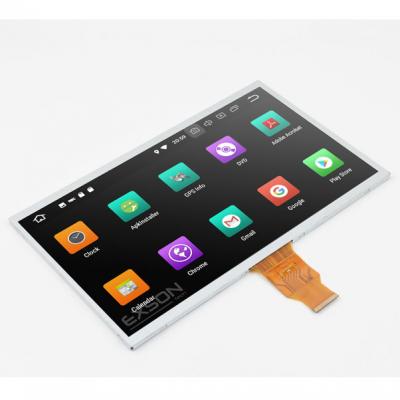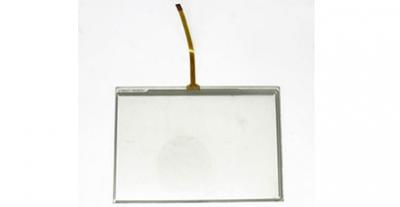We will discuss the importance of clean rooms in the production process of industrial LCD screens. Let's start with the definition.
A clean room is not simply defined as a clean space. In fact, it has a special definition from the International Organization for Standardization (ISO). It is a room that controls the concentration of particles in the air, and its construction and use are aimed at minimizing the introduction, generation, and retention of particles in the room, as well as controlling other related parameters such as pressure, temperature, and humidity as needed.
A clean room is an important facility in the production process of LCD screens in the industrial sector, with high cleanliness requirements for the production environment. Small pollutants must be controlled at low levels, especially particles of 1 micron or smaller, as such micro-pollutants can cause functionality loss or potentially reduce the shelf life of products.
In addition, clean rooms maintain hygienic conditions in the processing area, eliminating dust, particles, and microorganisms from the air. In turn, this also improves product quality and ensures efficient production.
Cleanliness levels are defined based on the maximum allowable particle count per unit volume. ISO 1 clean rooms have the highest cleanliness level, while ISO 9 clean rooms have the lowest cleanliness level.
To provide further clarity, in a typical urban environment, the outside ambient air may contain up to 35,000,000 particles per cubic meter with diameters of 0.5 microns and above, corresponding to an ISO 9 clean room. However, ISO 1 clean rooms only allow for 12 particles with diameters of 0.3 microns and smaller per cubic meter.
An effective air filtration system in the flexible clean room is crucial for maintaining the efficient operation of the production department. To ensure the desired standards are met, pre-filters are used to remove visible dirt and dust, while HEPA filters capture unseen tiny particles.
To prevent pollutants from entering the room, an overpressure environment is created by introducing air from the ceiling and passing it through fan-driven HEPA filters. This creates greater air pressure than outside, which in turn pushes pollutants out of the clean room through ventilation outlets at the bottom of the walls.
To give you an idea of what air purification in clean rooms for industrial LCD screen production means, imagine that the entire air is replaced and purified at a frequency of more than once per minute.
 Selection of the TFT LCD Touch ScreenMay 26, 2023In the information age of rapid development, LCD screens have been widely used in various fields, with TFT LCD touch screens with touch functionality being particularly prominent.Touch screens are use...view
Selection of the TFT LCD Touch ScreenMay 26, 2023In the information age of rapid development, LCD screens have been widely used in various fields, with TFT LCD touch screens with touch functionality being particularly prominent.Touch screens are use...view Application Analysis of the LCD Round LCD ScreenMay 26, 2023LCD round LCD screen - as the name suggests, is a circular shaped LCD screenMost of the LCD screens we normally encounter are square or rectangular, and circular screens are relatively rare. However, ...view
Application Analysis of the LCD Round LCD ScreenMay 26, 2023LCD round LCD screen - as the name suggests, is a circular shaped LCD screenMost of the LCD screens we normally encounter are square or rectangular, and circular screens are relatively rare. However, ...view Difference Between LCD and TFT ScreenOctober 31, 2022LCD refers to a liquid crystal display, and TFT is a type of LCD. The former is dedicated to desktop computers and the latter is dedicated to notebooks. So, what are the differences between lcd and tf...view
Difference Between LCD and TFT ScreenOctober 31, 2022LCD refers to a liquid crystal display, and TFT is a type of LCD. The former is dedicated to desktop computers and the latter is dedicated to notebooks. So, what are the differences between lcd and tf...view Exploring the Different Types and Remarkable Features of Touch Panel ModulesJanuary 25, 2024In today's tech-savvy world, touch screen technology has become an integral part of our daily lives. From smartphones and tablets to smart appliances, touch panel modules enhance the user experien...view
Exploring the Different Types and Remarkable Features of Touch Panel ModulesJanuary 25, 2024In today's tech-savvy world, touch screen technology has become an integral part of our daily lives. From smartphones and tablets to smart appliances, touch panel modules enhance the user experien...view Resistive Touch Screen Working Principle and ApplicationsDecember 9, 2022A resistive touch screen is a sensor that converts the physical location of a touch point (X, Y) in a rectangular area into a voltage representing the X and Y coordinates. Many LCD modules use resisti...view
Resistive Touch Screen Working Principle and ApplicationsDecember 9, 2022A resistive touch screen is a sensor that converts the physical location of a touch point (X, Y) in a rectangular area into a voltage representing the X and Y coordinates. Many LCD modules use resisti...view How Touch Panel Modules Shape User ExperiencesJanuary 25, 2024In the fast-paced world of technology, user interfaces play a pivotal role in shaping our interactions with devices. Among the innovative solutions driving this evolution is the touch panel module, a ...view
How Touch Panel Modules Shape User ExperiencesJanuary 25, 2024In the fast-paced world of technology, user interfaces play a pivotal role in shaping our interactions with devices. Among the innovative solutions driving this evolution is the touch panel module, a ...view Call us on:
Call us on:  Email Us:
Email Us:  2F-M1 XiaWei Industrial Park, GuanLan, LongHua District, SZ, China
2F-M1 XiaWei Industrial Park, GuanLan, LongHua District, SZ, China